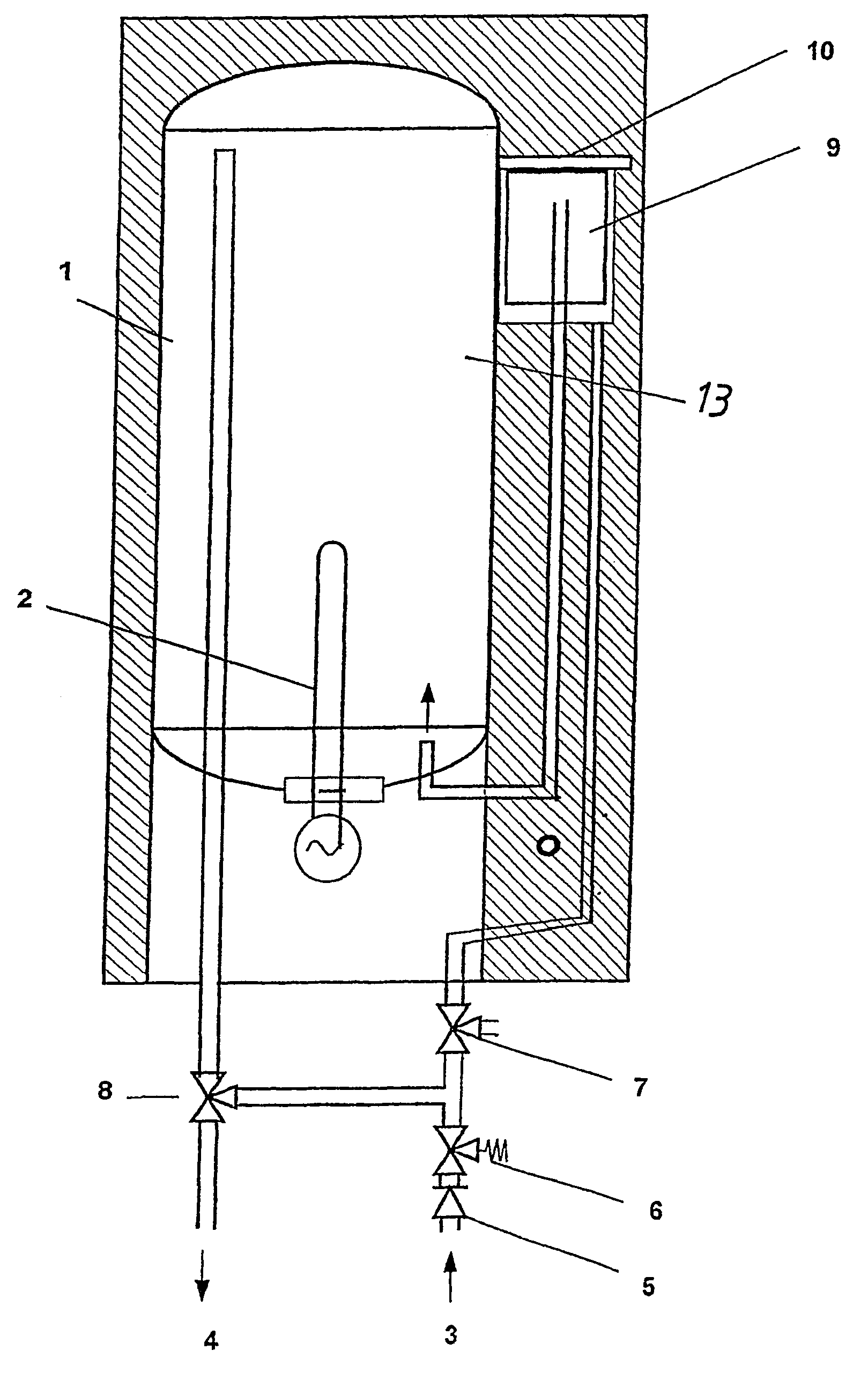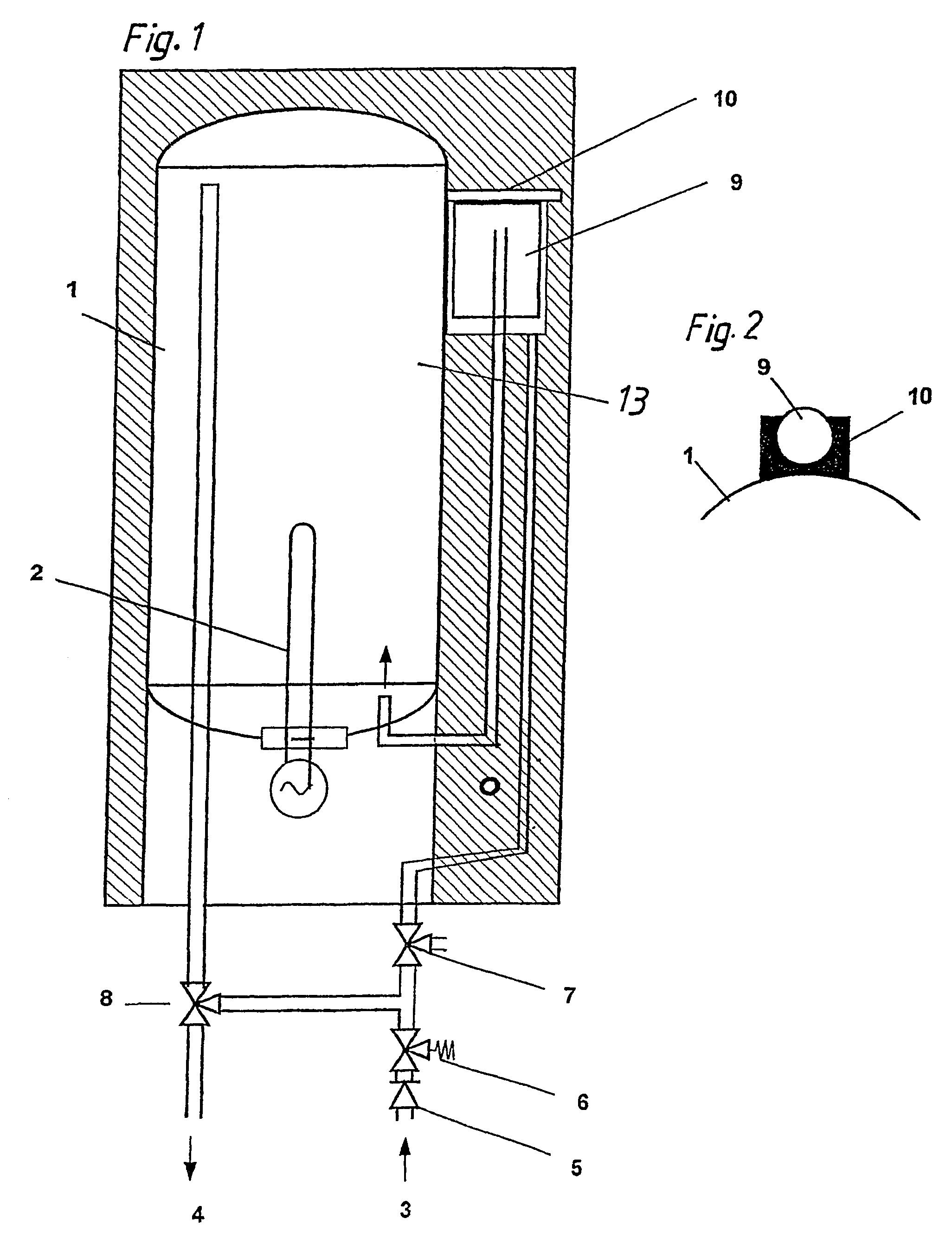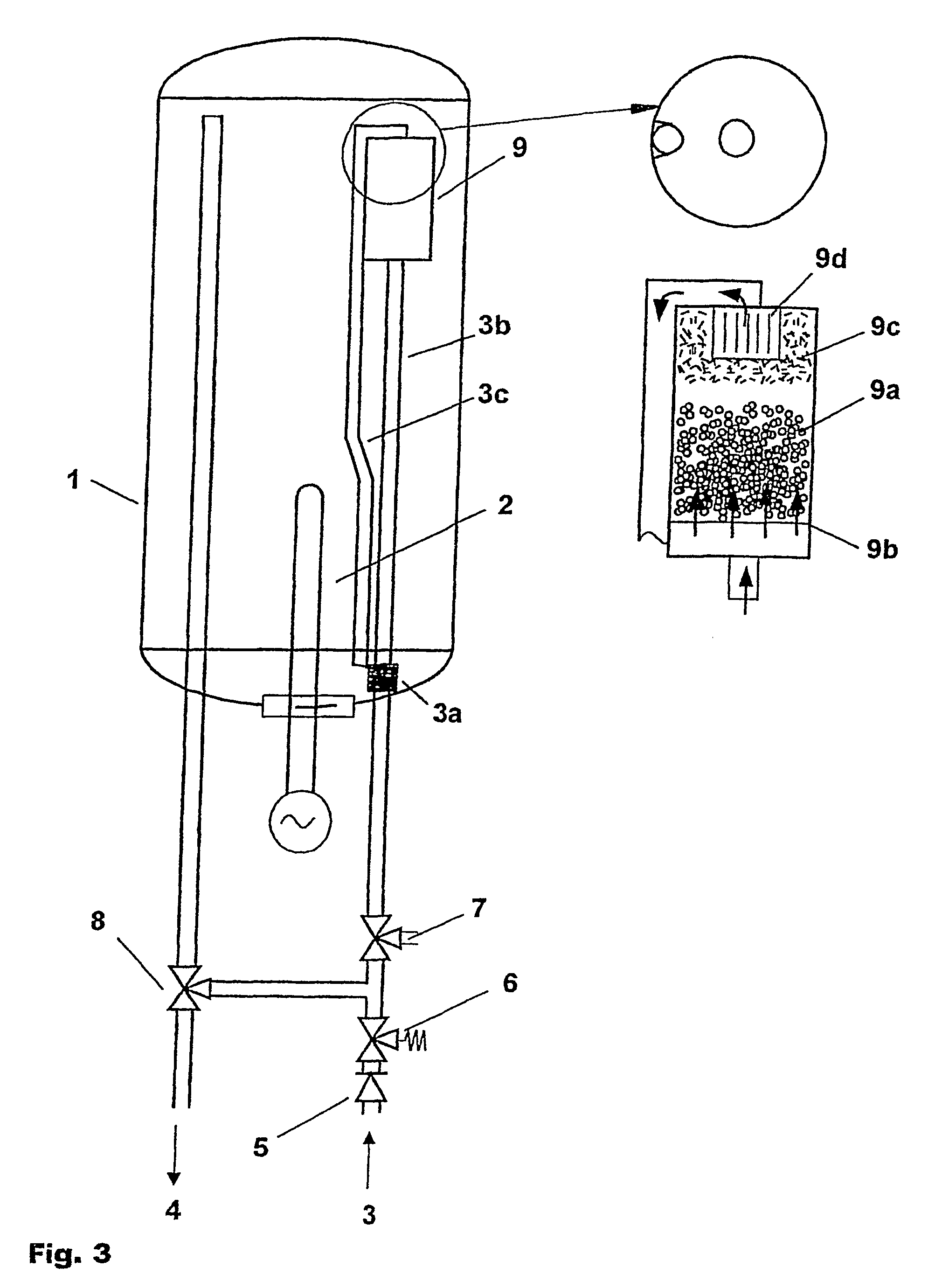Device for chemically/physically treating drinking water
- Summary
- Abstract
- Description
- Claims
- Application Information
AI Technical Summary
Benefits of technology
Problems solved by technology
Method used
Image
Examples
Embodiment Construction
[0032]In a typical single-family or two-family residence water is always drawn discontinuously, that is to say the water is still for the longest period of time, and that stagnation time can be used to heat the catalyst granular material to a temperature which is preferably over 55° C. Each time that water is drawn off, the water which is enriched with crystallisation centers is flushed into the boiler.
[0033]As a means for safeguarding against an increased pressure and a backflow has to be provided for safe reliable operation of the hot water storage unit, there is no need to provide any further measures. A suitable by-pass in order to be able to regularly back-flush the apparatus is sensible and useful for long-term operation.
[0034]FIG. 1 shows as an example integration of a water treatment unit into the cold water feed of a wall-mounted electric boiler: the boiler has a hot water container 1 and an (electrical) heating element 2 disposed on a heating flange. The cold water flows i...
PUM
| Property | Measurement | Unit |
|---|---|---|
| Temperature | aaaaa | aaaaa |
| Electrical conductor | aaaaa | aaaaa |
| Heat | aaaaa | aaaaa |
Abstract
Description
Claims
Application Information
 Login to View More
Login to View More - R&D
- Intellectual Property
- Life Sciences
- Materials
- Tech Scout
- Unparalleled Data Quality
- Higher Quality Content
- 60% Fewer Hallucinations
Browse by: Latest US Patents, China's latest patents, Technical Efficacy Thesaurus, Application Domain, Technology Topic, Popular Technical Reports.
© 2025 PatSnap. All rights reserved.Legal|Privacy policy|Modern Slavery Act Transparency Statement|Sitemap|About US| Contact US: help@patsnap.com



